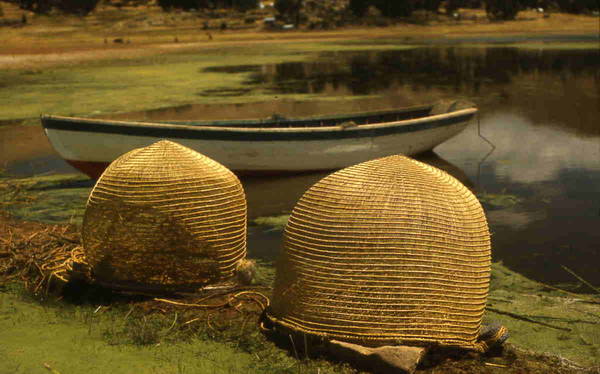Lake Titicaca (Spanish: Lago Titicaca) is a lake in the Andes on the border of Peru and Bolivia. By volume of water, it is the largest lake in South America. Lake Maracaibo has a larger surface area, but it is considered to be a large brackish bay due to its direct connection with the sea.
It is often called the highest navigable lake in the world, with a surface elevation of 3,812 m (12,507 ft).Although this refers to navigation by large boats, it is generally considered to mean commercial craft. For many years the largest vessel afloat on the lake was the 2,200-ton, 79-metre (259 ft) SS Ollanta. Today the largest vessel is probably the similarly sized, but broader, train barge/float Manco Capac, operated by PeruRail (berthed, as of 17 June 2013, at 15°50′11″S 70°00′53″W, across the pier from the Ollanta). At least two dozen bodies of water around the world are at higher elevations, but all are much smaller and shallower.The origin of the name Titicaca is unknown. It has been translated as "Rock Puma", as local communities have traditionally interpreted the shape of the lake to be that of a puma hunting a rabbit.
"Titicaca" combines words from the local languages Quechua and Aymara. The word is also translated as "Crag of Lead". Locally, the lake goes by several names. Because the southeast quarter of the lake is separate from the main body (connected only by the Strait of Tiquina), the Bolivians call it Lago Huiñaymarca (also Wiñay Marka, wich in Aymara means "The eternal city") and the larger partLago Chucuito. In Peru, these smaller and larger parts are referred to as Lago Pequeño and Lago Grande, respectively.
Source
pic and inf
